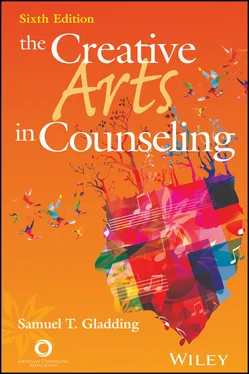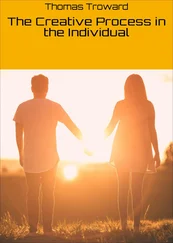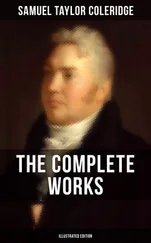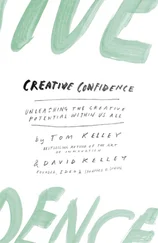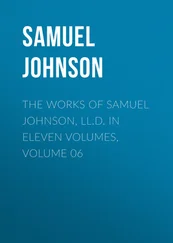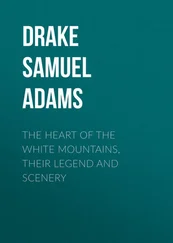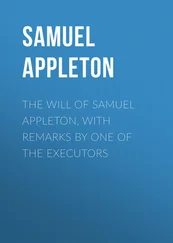Samuel T. Gladding - The Creative Arts in Counseling
Здесь есть возможность читать онлайн «Samuel T. Gladding - The Creative Arts in Counseling» — ознакомительный отрывок электронной книги совершенно бесплатно, а после прочтения отрывка купить полную версию. В некоторых случаях можно слушать аудио, скачать через торрент в формате fb2 и присутствует краткое содержание. Жанр: unrecognised, на английском языке. Описание произведения, (предисловие) а так же отзывы посетителей доступны на портале библиотеки ЛибКат.
- Название:The Creative Arts in Counseling
- Автор:
- Жанр:
- Год:неизвестен
- ISBN:нет данных
- Рейтинг книги:3 / 5. Голосов: 1
-
Избранное:Добавить в избранное
- Отзывы:
-
Ваша оценка:
- 60
- 1
- 2
- 3
- 4
- 5
The Creative Arts in Counseling: краткое содержание, описание и аннотация
Предлагаем к чтению аннотацию, описание, краткое содержание или предисловие (зависит от того, что написал сам автор книги «The Creative Arts in Counseling»). Если вы не нашли необходимую информацию о книге — напишите в комментариях, мы постараемся отыскать её.
*To purchase print copies, please visit the ACA website here
*Reproduction requests for material from books published by ACA should be directed to permissions@counseling.org
The Creative Arts in Counseling — читать онлайн ознакомительный отрывок
Ниже представлен текст книги, разбитый по страницам. Система сохранения места последней прочитанной страницы, позволяет с удобством читать онлайн бесплатно книгу «The Creative Arts in Counseling», без необходимости каждый раз заново искать на чём Вы остановились. Поставьте закладку, и сможете в любой момент перейти на страницу, на которой закончили чтение.
Интервал:
Закладка:
A second limitation of using the arts in counseling is that many artists (and some clients) may view counseling and activities associated with it as being unartistic. They may be less inclined to work on problems if the format is not highly structured and primarily cognitive in nature. For these individuals, using the arts in counseling may be distracting and frustrating.
A third reason why the arts are not always welcome in counseling relates to popular misperceptions of the arts, especially links between creative arts and mental health. In the 17th century, Italian physician Cesare Lombroso linked creativity with mental illness. Even though such a connection is totally unfounded, the perception still remains and encourages reluctance on the part of many to participate in activities that are of an artistic or creative nature.
Creative Reflection
When have you seen the arts misused therapeutically? How can you prevent abuse of the creative arts in your work with clients?
The opposite side of this coin, but with the same result, is the tendency of clients to avoid artistic enterprises because of an irrational fear that they will become too involved. Such a response is typical of someone with loose ego boundaries and obsessive-compulsive behavior, but it is also found in many other people. Some artists, such as Mozart, are reported to have worked at the expense of their health and that of their families. People who avoid the arts in counseling fear being placed in a situation with potential liabilities as well as possibilities.
A fourth drawback to including the arts in one’s repertoire of counseling skills is that the techniques used may become arts and crafts, which is often seen as a much more mechanical and structured activity than the procedures used in helping and healing. It should be stressed that arts and crafts as typically practiced in therapeutic settings have limited goals and may be seen as busy work. Few problem-solving skills and innovative factors are used in arts and crafts as opposed to the creative arts. For example, crafts in counseling are usually associated with putting things together, such as assembling a basket, whereas the creative arts promote the production of something new and different. Crafts, on the one hand, usually do not require much thinking. Instead, participants are instructed to follow directions. The creative arts, on the other hand, involve the full use of one’s imagination and often bring to the forefront concerns that can be addressed or alleviated for the betterment of the individual’s mental health.
| Arts and Crafts | Creative Arts in Counseling |
| The primary goal is to create a product; few skills are required. | The primary goal is to intentionally use the arts to foster insight and psychological change. |
| The facilitator may influence the creation of the artwork through verbal or behavioral means, such as instructions. | The work produced is not as important as the process involved. |
| The product produced may be assessed for artistic form or function. | The product produced is a catalyst for examining personal concerns. |
A fifth limitation of using the arts in counseling is that, by so doing, clients may become too introspective, passive, or overcritical of themselves or situations. Such a posture leads to paralysis and inhibits growth borne out of involvement. It is just the opposite of the active mental and physical involvement that Siegel (1986) described as an essential part of self-healing.
A sixth drawback to the use of the arts in counseling is that they may be used in nontherapeutic ways. Many art forms promote the expression of feelings and help persons get beyond mere intellectual acknowledgment of situations. In helping clients recognize and express their feelings, especially the big four—anger, sadness, joy, and fear (Meier & Davis, 2019)—the counselor must therapeutically channel the release of emotions if clients are to realize more fully their own humanity (B. Warren, 1993). Catharsis in and of itself is of limited usefulness and may be detrimental to the health and well-being of individuals.
A final drawback to using the arts in counseling is that they may be used in nonscientific ways. The arts and sciences share four common attributes: “honesty, parsimony, duality, and insight” (Burke, 1989, p. 27). Honesty implies genuineness, authenticity, and openness of one’s work. Parsimony is conciseness and straightforward simplicity. Duality is the ability to be simultaneously sensitive and tough-minded. Insight, as alluded to earlier, deals with the ability to understand old material in a new way. Whenever the arts are used in counseling without adherence to this common bond with science, practitioners face the danger that the results will not be therapeutic.
Summary
Counseling at its best has an artistic quality that enables individuals to express themselves in a creative, unique, and therapeutic manner. It is an activity that may be enhanced through encouraging some clients to participate in creative experiences, especially artistic expressions such as painting, writing, dancing, or playing. These activities, if carried out in a nonmechanical and therapeutic manner, help people become more in tune with their emotions and form new, healthier relationships with themselves and others. The arts sensitize clients to untapped aspects of themselves and promote an awareness of uniqueness and universality. Ancient and modern civilizations have recognized this quality of the arts, and the tradition of using the arts in counseling is a long and distinguished one.
The creative arts in counseling are, as a group, process oriented, empowering, authentic, parsimonious, multicultural, and insight focused. They energize individuals and help connect them with positive aspects within and outside of themselves while fostering a new sense of self. By engaging in playful, cooperative, and communicative dimensions of art, individuals recognize more clearly the complexity and simplicity of their lives. Similarly, counselors benefit from their involvement with the arts by being able to work with a greater variety of clients in therapeutic ways. Engaging in processes, such as using the SCAMPER model of creativity, enriches counselors personally and professionally and helps their clients gain new perspectives or try different behaviors, whether with the arts or not.
Although those who are professional artists, irrationally minded, or mentally unstable may not be appropriate candidates for therapeutic treatment using the arts, many individuals are excellent candidates. It is to the advantage of everyone involved that professional helpers learn how to use the creative arts in counseling.
Exercises
1 When have you found yourself creative? What did the experience feel like? What art forms, if any, were involved?
2 Different creative arts have blossomed during specific time periods; for example, visual art during the Renaissance in Florence. Which of the creative arts do you like best? What time period is most exciting for you with regard to this art?
3 How do you think you might use the SCAMPER model in your counseling practice? Which activity associated with the model (e.g., “substitute”) do you find most relevant to you?

Chapter 2 Music and Counseling
Harmony
The music of counseling varies in time from the soft sob of weeping to laughter’s staccato.Often the melody is found in the sound of feeling in voices and words rich in hope.Within each session is a symphony leading to inner harmony and possibly new movements.
Читать дальшеИнтервал:
Закладка:
Похожие книги на «The Creative Arts in Counseling»
Представляем Вашему вниманию похожие книги на «The Creative Arts in Counseling» списком для выбора. Мы отобрали схожую по названию и смыслу литературу в надежде предоставить читателям больше вариантов отыскать новые, интересные, ещё непрочитанные произведения.
Обсуждение, отзывы о книге «The Creative Arts in Counseling» и просто собственные мнения читателей. Оставьте ваши комментарии, напишите, что Вы думаете о произведении, его смысле или главных героях. Укажите что конкретно понравилось, а что нет, и почему Вы так считаете.
